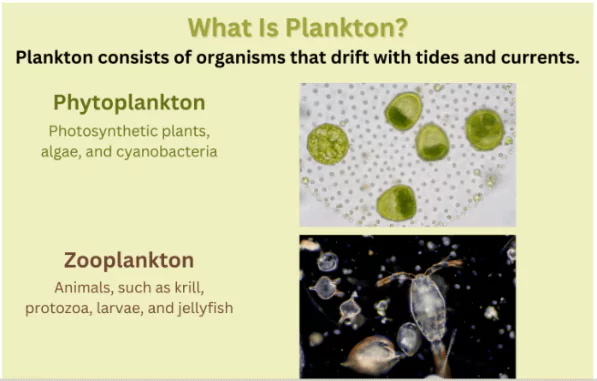A recent discovery has shed light on how single-celled phytoplankton, specifically the bioluminescent species Pyrocystis noctiluca, can inflate to six times their original size to reach the ocean’s surface.
- The researchers discovered that P. noctiluca cells behave more like little submarines which can control their density so they can choose where they want to reach the ocean’s surface.
About Pyrocystis Noctiluca
- It is a unicellular marine plankton that produces bioluminescence in response to water movement.
- Bioluminescent plankton: Tiny organisms that produce light through a chemical reaction in their bodies
- Bioluminescence occurs through the combination of luciferin (protein) and luciferase (enzyme).
- Habitat: Found in tropical and subtropical seas and oceans.
- Density and Movement: They are denser than seawater, So It swells at the start of its life cycle reducing its density and rising in the water column.
- Life Cycle: It Has a seven-day life cycle, during which it divides into two daughter cells as it sinks.
Enroll now for UPSC Online Classes
About Plankton

- Plankton refers to small organisms that drift with ocean currents and cannot swim well enough to move against them. They can be microscopic or larger species like jellyfish and crustaceans.
- The term “plankton” comes from the Greek word meaning “drifter” or “wanderer,” highlighting their inability to swim against water currents.
- Classification of Plankton: The two main categories are:
- Phytoplankton: Plant-like organisms.
- Zooplankton: Animal-like organisms.
About Phytoplankton
- Phytoplankton are microscopic plants, but they play a huge role in the marine food web.
- Phytoplankton perform photosynthesis to convert the sun’s rays into energy to support them, and they take in carbon dioxide and produce oxygen.
- Because they need the sun’s energy, phytoplankton are found near the water’s surface.
- Phytoplankton include a wide variety of marine autotrophs → Like Diatoms, Dinoflagellates, Cryptomonads, Green algae, Blue green algae, etc.
Check Out UPSC Modules From PW Store
Significance of Phytoplanktons
- Contribute more than half of the oxygen in the environment.
- Reduce global warming by absorbing human-induced carbon dioxide.
- Serve as the base of the ocean food chain.
- Important bioindicators regulating life in ocean → Abundance determines the overall health of the ocean ecosystem.
![]() 21 Oct 2024
21 Oct 2024

